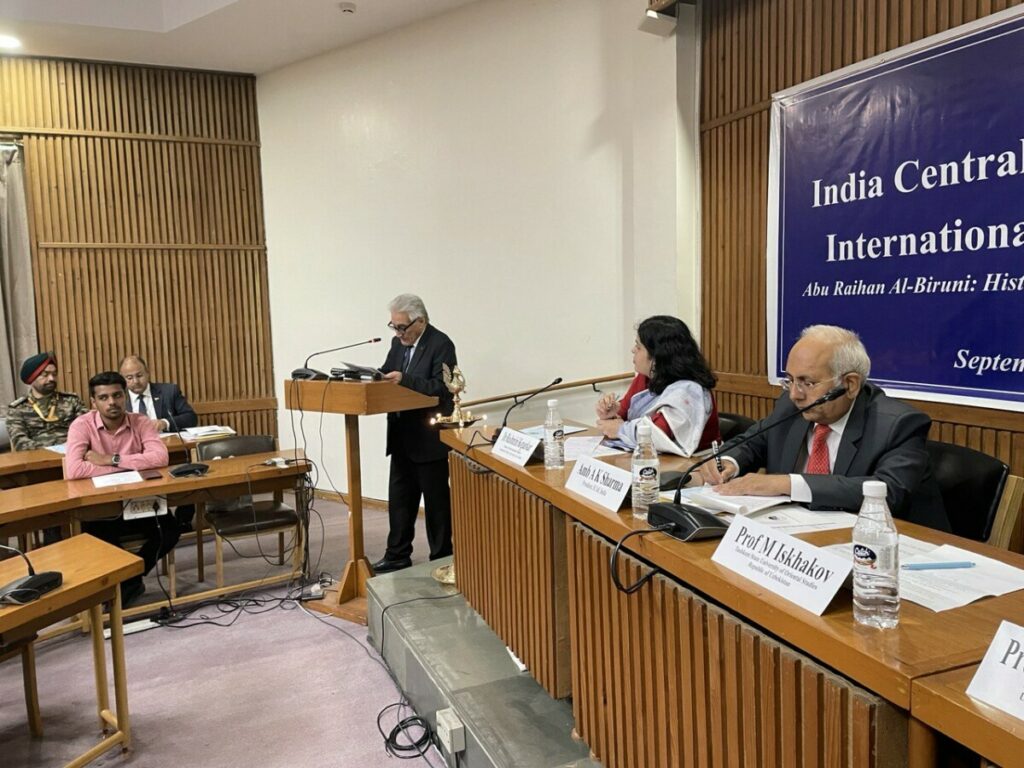Professor Mirsadiq Is’hakov: “About my trip to India”

On September 27-30, 2023, I visited Delhi (NyuDelhi) at the invitation of the Central Asian foundation of India (President Amb Ashok Kumar Sharma, Director of the foundation Dr. Professor Ramakanth Dwaywedi)and attended the International Conference on the 1050th anniversary of the birth of our great ancestor Abu Rayhon Beruni, organized by the foundation in cooperation of the Embassy of the Republic of Uzbekistan in India. I observed high respect for Beruni in the participants of the conference. Almost all of the speakers tried to illuminate various aspects of the scholar’s Indian work. It was further argued that the encyclopedic nature of Beruni’s work and the results achieved by a scientist in each field precede their time, so far not losing their scientific value. Upon landing at the Delhi International Airport, named after Indira Gandhi, an aircraft of Uzbekistan Airlines, my name was announced in the salon and I was asked to come to the first door. On the satellite corridor, airport servants-a young man and a woman-met and escorted me through the halls and corridors of the airport and returned, turning over to Sadriddin Suyarov, the press affairs officer of our embassy, who was waiting outside. So I became a guest of our embassy in Delhi. An area of land was set aside for the embassy in 1992 by Surmat aka, the first ambassador of independent Uzbekistan to India. It turns out that the construction work was carried out during the period of inspiration of our second ambassador. And the place turned into a magnificent architectural structure. It is not a rectangular building that our ancient eyes are used to. Saying the north-east – south-west direction of the castle plan is like The polygonal shape of the letter S would not be a mistake. The Peshayvoni was made triangular rather than rectangular or semicircular as usual. A large Dolon (vestibule) when entering through the door, a semicircular staircase to the second floor on the left, several doors in the Dolon – a hall designed for exhibitions in the Middle, several service rooms along the corridor, a door opening into the kitchen in the right corner of the dolon, finally, a meeting hall on the right side of the Dolon. At the entrance to Dolon, in the right-hand corner is the Uzbek Souri (chorpoya), a khontakha decorated with flirts, around which pillows are placed with blankets. There is a door from the exhibition hall to the outside of the castle – to the back yard. A pond in the middle of the wide sahni of the courtyard, landscaped, maintained lawn areas lined with “sopolak parchin” from the middle of the aisle. Tashhovly is separated from a large garden area with an arc-like short fence. A series of palm trees line up along the outer side of this arc-like barrier. It was in this building that I described that a dinner party was organized by the Embassy of our Uzbek Republic for the participants of this conference. Before the party there was a conversation in a cozy meeting room. Our ambassador Aziz Baratov, Ashok Kumar Sharma and I made a speech. I spoke with the content that our relations with India and the Indian people have a history of 3-3.5 thousand years. The main settlement of India is the fact that the Indians passed through Central Asia in the form of Aryan migration 3.5 thousand years ago, from which our ancestors came into contact, including in the 3rd century BC, a representative of the Maurya dynasty of India told us that the famous Ashoka had erected stone scrolls along a caravan route called Karapati, which connected India with Central Asia via Termez, with road details warning caravans. Through this path, Ashoka also pursued the spread of the Buddhist religion. Finally, I told about the appearance next to Termez of the monastery of the first communities of Buddhism, near it Fayoztepa, rapacious Buddhist temples.